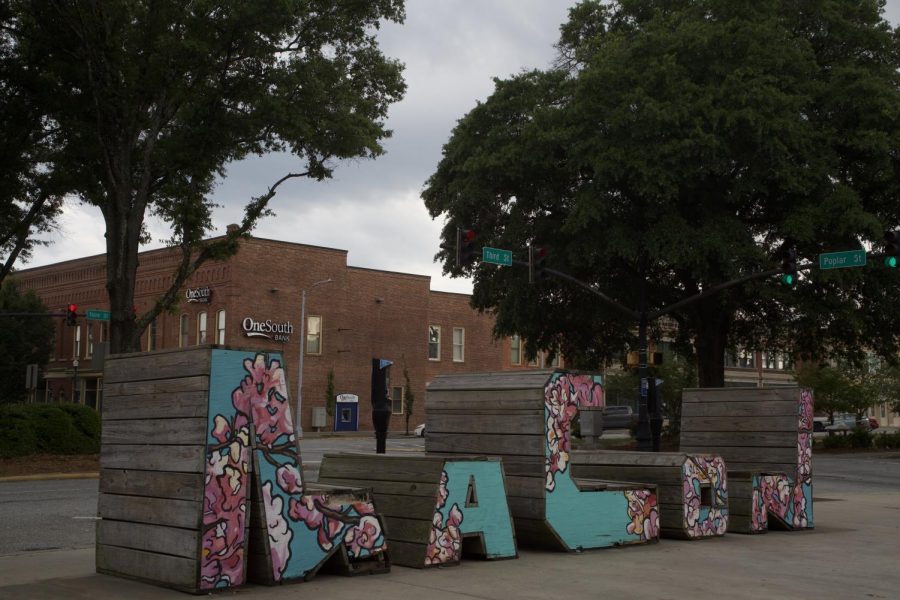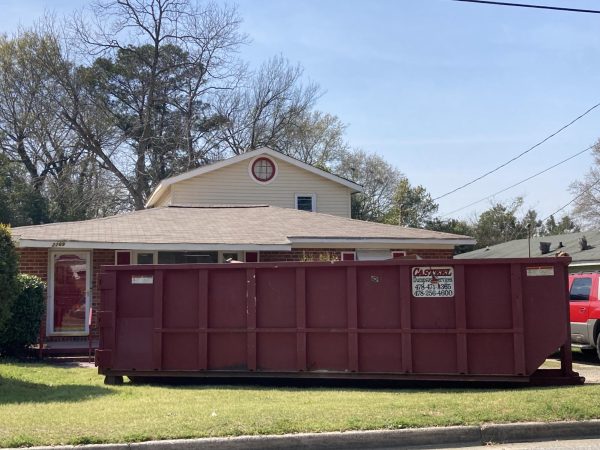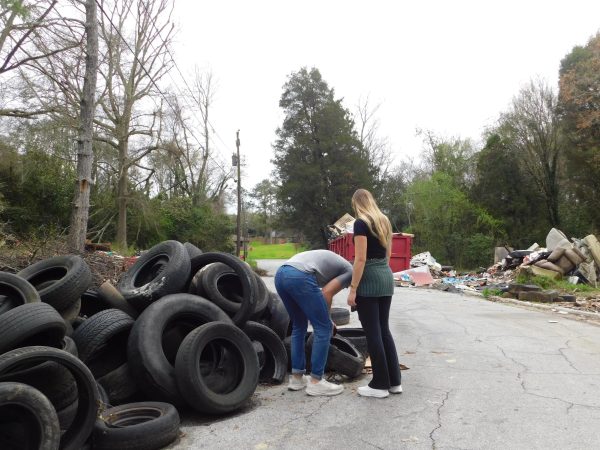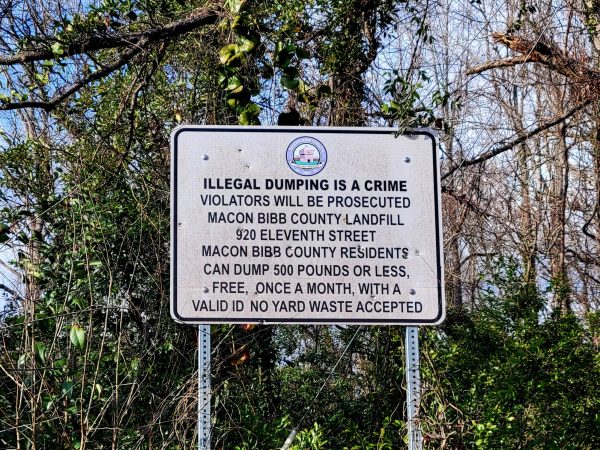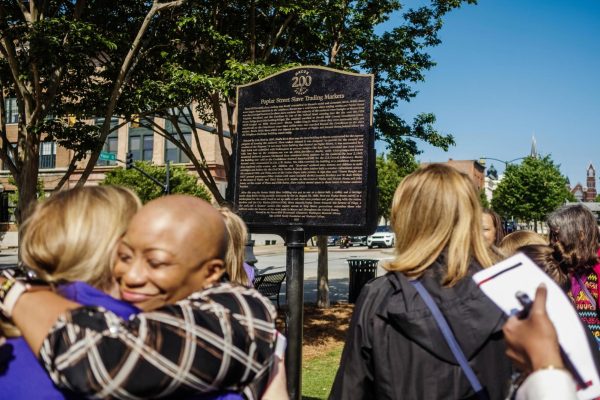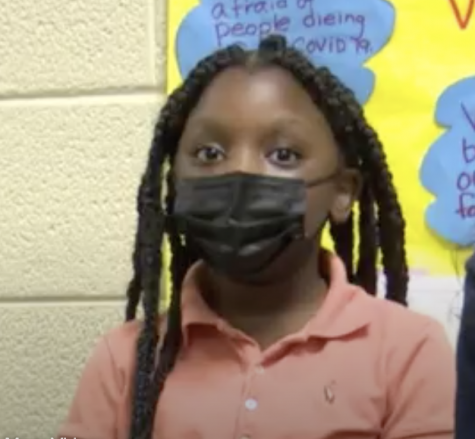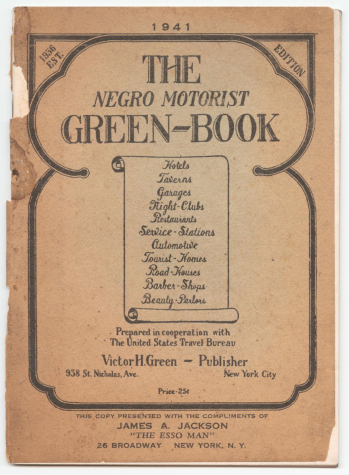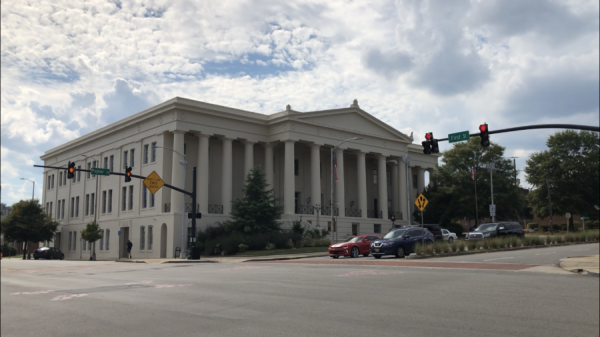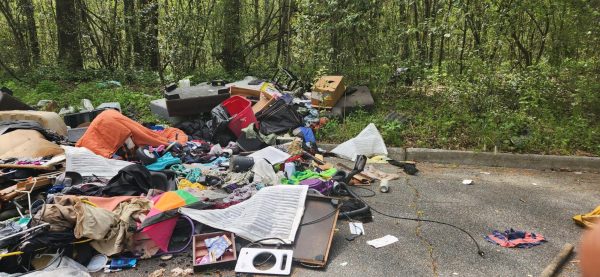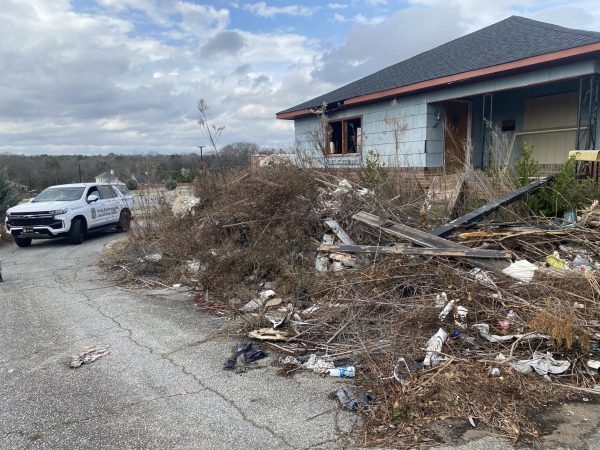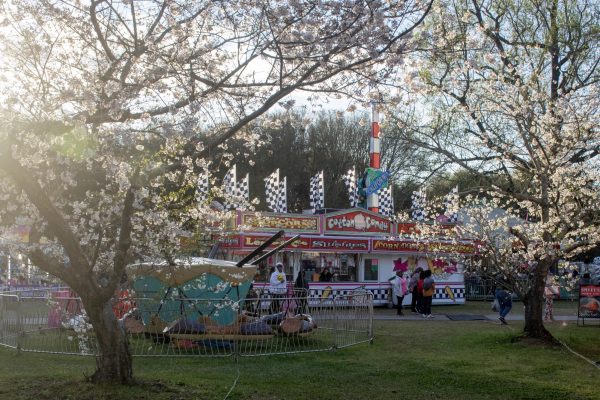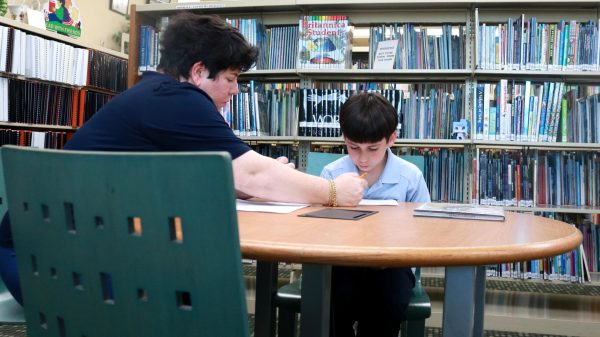Macon’s inequitable tree growth highlights historical discrepancies
Benches in downtown Macon at the intersection of Poplar Street and Third Street. In downtown, mature trees line some streets while trees are absent from others altogether.
In Macon, it is a general rule to do as little as possible outside from early afternoon to dusk during the summer months. The heat index is the first thing people check every morning as they prepare for their day, making sure it will be safe to go for a walk, do yard work or simply run errands.
The urban heat island effect occurs as heat is absorbed throughout the day by impermeable surfaces such as asphalt, cement and buildings, and is then released as the air cools down after sunset. This phenomenon makes cities consistently warmer than surrounding, greener areas since the city’s buildings and roads warm the air, never allowing it to cool off completely in the night.
A common solution is to plant trees in the urban setting because shade can reduce the heat one feels by as much as 20 degrees Fahrenheit, according to the EPA.
In a rapidly changing climate, trees are part of the solution to mitigating the effects of increasing heat waves and harsher weather patterns. The United Nations and the Arbor Day Foundation have deemed Macon a “Tree City of the World” for three years; still, there are disparities in the tree canopy from street to street.
Macon’s Ridge Avenue neighborhood boasts towering live oaks and magnolias growing among the quaint homes that line the street. To the east in the Pleasant Hill neighborhood, there are fewer mature trees and where they exist, they are in noticeably worse condition. Pleasant Hill’s older trees are frequently cut back to make space for power lines and the younger trees are not yet tall enough to provide substantial shade over homes or the street. Over the years, this neighborhood has suffered from less investment than others, which resulted in less opportunity to cultivate trees in the area.
Pleasant Hill has historically been targeted by the federal government. In the 1930s, government surveyors deemed 65% of Macon’s neighborhoods, including Pleasant Hill, to be “hazardous”, making Macon the most redlined city in the United States. Banks used redlining to restrict to whom they gave loans. The practice was intended to limit Black families from purchasing homes alongside white families.
A 2018 study by the National Community Reinvestment Coalition found that the racial wealth gap that resulted in Macon and other heavily redlined cities persists today. Areas deemed “hazardous” then are more likely to be lower income and majority-minority today. According to American Forests’ tree equity score, the four least-canopied areas in Macon – one of which was in Pleasant Hill – have an average poverty rate of 74 percent. Today, trees can serve as signs of disinvestment since the time of redlining. Mature trees signal a wealthier area where for years people had enough money to care for their lawns or to hire someone else do so. In other areas, landscaping was secondary to making a living.
In the 1960s, construction of Interstate 75 cut through a tract of Pleasant Hill land that held a cemetery in which historically significant Black leaders were interred. In recent years, there have been efforts to mitigate further destruction of the neighborhood with the expansion of the interstate, but those efforts have been met with middling success.
Additionally, a 2019 study conducted by the University of California-Berkeley suggests that decades of redlining has had an ill-effect on the respiratory health of those who live in the areas which were discriminated against in the past. Particulates that exacerbate asthma can be removed from the air through trees, but only if there are enough of them to remove the pollution faster than it is being introduced into the air
In places with fewer trees, homes regularly become hotter than the outside because they absorb heat from the sun throughout the day. In these conditions, air conditioning units work constantly to lower the inside temperature, but not all homes in Macon have this luxury. While the Macon-Bibb Housing Authority requires that its public housing has air conditioning, there are no such requirements for private housing. This can leave many residents sweltering in the summer heat.
But air conditioning can worsen the ongoing climate crisis. Macon is less than 30 miles from the country’s largest coal plant and the state’s largest polluter, Plant Scherer. Increasing demand for electricity, while not doing more to lessen the impact of that demand, has made the need for solutions increasingly dire. According to the EPA, planting shade trees in areas with diminished or no tree canopy helps ease reliance on energy-gobbling AC units. However, there is more that goes into lining streets and neighborhoods with plush greenery than planting a tree and moving on to the next block.
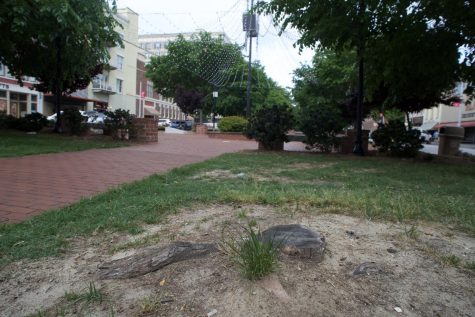
Georgia Forestry Commission Community Forester Lea Clark said that many areas in urban settings are not conducive to trees flourishing. She cited the example of a small, grassy island in the middle of an asphalt parking lot.
“Those trees are never going to look good because there’s maybe a foot of dirt that they’re growing in,” said Clark. “Once those roots extend into all the dirt and they’ve sucked up all the resources, the tree’s just gonna stagnate and die because there’s nothing feeding it.”
Many trees downtown are lined with cement sidewalks on three sides and asphalt parking spaces on the other, leaving roughly 100 square feet of open ground before impermeable surfaces take over. According to Clark, the ground around the trees is easily compacted over a short period of time once cars are allowed to pass over it, which prevents any roots from penetrating the dense wall of clay-like dirt. The surrounding area holds nutrients that the trees need to survive, but are unable to access.
Jason Gordon, associate professor of community forestry at the University of Georgia, studies how trees interact with urban infrastructure. He said that they are often planted without taking their needs into consideration. Gordon cited water oaks and Bradford pears as examples of trees that are often planted with little forethought.
“In an open city situation, they have a tendency to grow in a way that is not structurally sound, and that is where pruning comes in,” said Gordon. “And we don’t prune them in a way that makes them stronger in windy events.”
Sidewalks, streets and parking lots in Macon are frequently lined with willow oaks because they grow quickly and relatively easily in many different soil compositions. However, that promise of fast growth can often thwart the tree’s original carbon-removal objective.
“In terms of climate change, which is linked to the heat island effect, water oak is a terrible tree to plant because fast-growing trees do not have as good of capabilities for carbon storage and carbon sequestration,” said Gordon.
The trees that grow quickly also die relatively quickly, leaving the carbon they have in their biomass to be released back into the air if the county incinerates the trees. A slower growing tree is planted, it stands a chance of sequestering more carbon over its lifetime than a fast grower, despite reaching maturity much later than other trees.
“It’s expensive to plant them because when you do it in a streetscape planting, you have to do many things underground to plan ahead for the roots not getting into electrical lines and sewer lines,” said Clark. “Once it’s planted, [Public Works] would just need to come by and water it” in addition to a one to two year pruning cycle.
Some cities budget for trees to be replaced every decade or so, despite their ability to live for more than a century in the right conditions.
“In the urban setting, life is so hard that [cities] just figure they will just budget for 10 years. ‘We’re just gonna be taking this out and redoing it’,” said Clark.
A surge of funding for planting trees in underserved urban areas is likely to come from the Inflation Reduction Act, a federal law signed in August 2022 by President Joseph Biden. In the law, there is roughly $1.5 billion set aside to improve the environmental quality of low income neighborhoods.
Additionally, the Justice40 Initiative created by the Biden administration seeks to allot “40 percent of the overall benefits of certain Federal investments flow to disadvantaged communities that are marginalized, underserved, and overburdened by pollution,” according to the White House’s website.
Clark said that with the passage of the Inflation Reduction Act her department stands to receive a 400 percent increase in funding that will go toward giving away trees and working on maintaining the health of urban forests.



